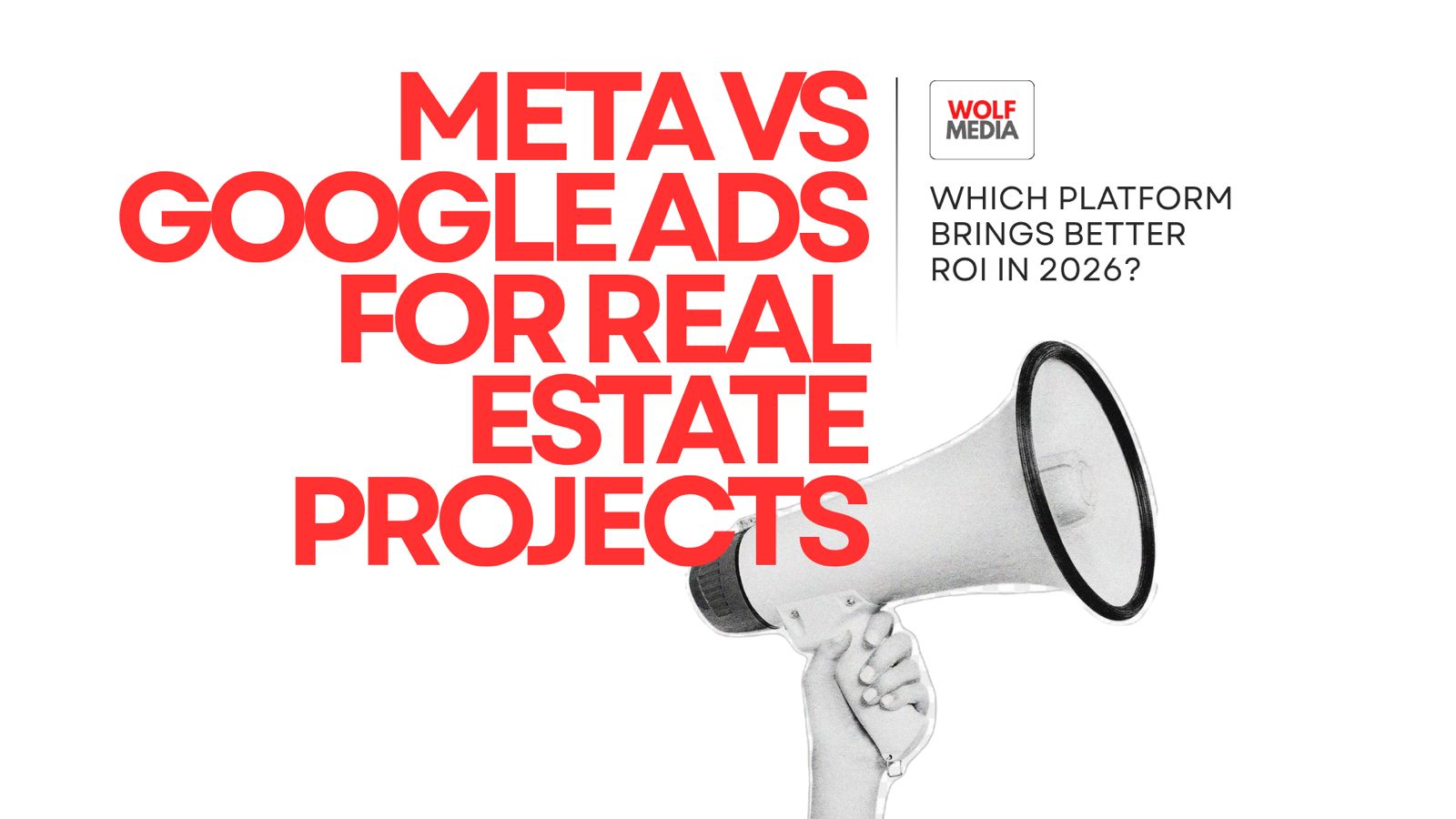October 19, 2025
Real Estate Digital Marketing, Google Ads for Real Estate, Meta Ads for Real Estate, Real Estate Marketing India, Real Estate ROI
Meta vs Google Ads for Real Estate Projects: Which Platform Brings Better ROI in 2026?
The Indian real estate market is evolving fast. With every launch, pre-launch, and festive offer, developers are pouring crores into digital campaigns. But one question still divides every marketing room: which performs better, Meta Ads or Google Ads?
If you are investing lakhs every month into digital marketing, understanding where your rupee brings maximum return is no longer optional. It is strategy.
The Real Estate Buyer Journey Has Changed
In 2026, buyers do not just see an ad and call. They move through multiple touchpoints.
A family exploring villas in North Bangalore might:
See a Facebook carousel ad of a project on Meta
Google “3 BHK near Yelahanka”
Watch a YouTube walkthrough of the property
Get retargeted on Instagram with a site-visit offer
This journey makes both Meta and Google essential, but their roles differ.
Meta Ads: The Power of Attention and Desire
Meta (Facebook + Instagram) dominates the discovery stage. It is where buyers notice your project before they even begin their search.
Advantages for Real Estate Developers:
Visual storytelling: Carousel and reel ads allow lifestyle-led positioning, perfect for luxury, villa, and premium segments.
Audience precision: Developers can target by interest (home ownership, interior design, income level, job title, locality).
Retargeting strength: Meta’s pixel data ensures you do not lose warm leads who engaged but did not enquire.
Lead generation forms: Instant, pre-filled lead forms reduce friction for pre-sales teams.
Limitations:
Lead quality can vary. Many users browse casually.
Cost per lead (CPL) is often lower, but conversion to site visit can be weaker unless paired with strong nurturing automation.
Best Use Case:
Top-of-funnel awareness, pre-launch buzz, and remarketing campaigns for ongoing projects.
Google Ads: The Intent Powerhouse
Google Ads work best when the user already has buying intent. Someone searching “2 BHK flats in Whitefield under 80 lakhs” is ready to act, and that is where Google dominates.
Advantages for Developers:
High-intent traffic: These users are actively exploring projects and ready to compare.
Keyword-based targeting: Developers can target by location, price bracket, and amenities.
Better conversion ratio: Google leads typically have higher site-visit and booking potential.
Performance tracking: You can track every click, call, and conversion precisely.
Limitations:
Higher competition means higher CPC (cost per click).
Requires smart landing page optimisation; otherwise, CPL can skyrocket.
Works best with a strong remarketing layer via Meta or Display.
Best Use Case:
Mid-to-bottom funnel campaigns, post-launch sales, festive offers, and site-visit conversion drives.
Cost Comparison: Meta vs Google Ads (2025–26 Trends in India)
Platform | Avg. Cost Per Lead | Lead to Site Visit Conversion | Best For |
|---|---|---|---|
Meta Ads | ₹120 – ₹350 | 10–18% | Awareness, remarketing |
Google Ads | ₹400 – ₹900 | 25–35% | High-intent conversions |
(Based on aggregated campaign data from Tier 1 and Tier 2 Indian developers in 2025.)
Meta gives cheaper leads, but Google gives better-qualified ones.
Smart developers use both: Meta for scale, Google for intent.
The Winning Strategy for 2026: Integrate, Do Not Compete
Instead of choosing between Meta or Google, leading developers are creating integrated funnels.
Example:
Launch a teaser campaign on Meta to generate buzz.
Retarget engaged users with a Google Display campaign.
Use Google Search for high-intent leads.
Nurture those leads via WhatsApp automation.
The result is consistent branding, smarter remarketing, and stronger ROI.
Final Thought
At Wolf Media, we have seen a clear pattern across our real estate clients in 2025–26. Meta drives volume. Google drives conversions.
When both platforms run together with unified tracking and CRM automation, CPL drops by up to 28%, and conversion ratios rise by 35–40%.
The biggest ROI does not come from picking a side; it comes from syncing both platforms under one data-driven pre-sales ecosystem.
In 2026, Meta and Google are not rivals. They are teammates in your digital sales arsenal.
Meta makes buyers dream. Google helps them decide.
And if your campaigns, creatives, and CRM automation speak the same language, your next project launch will not just get leads, it will get booked-out blocks.

